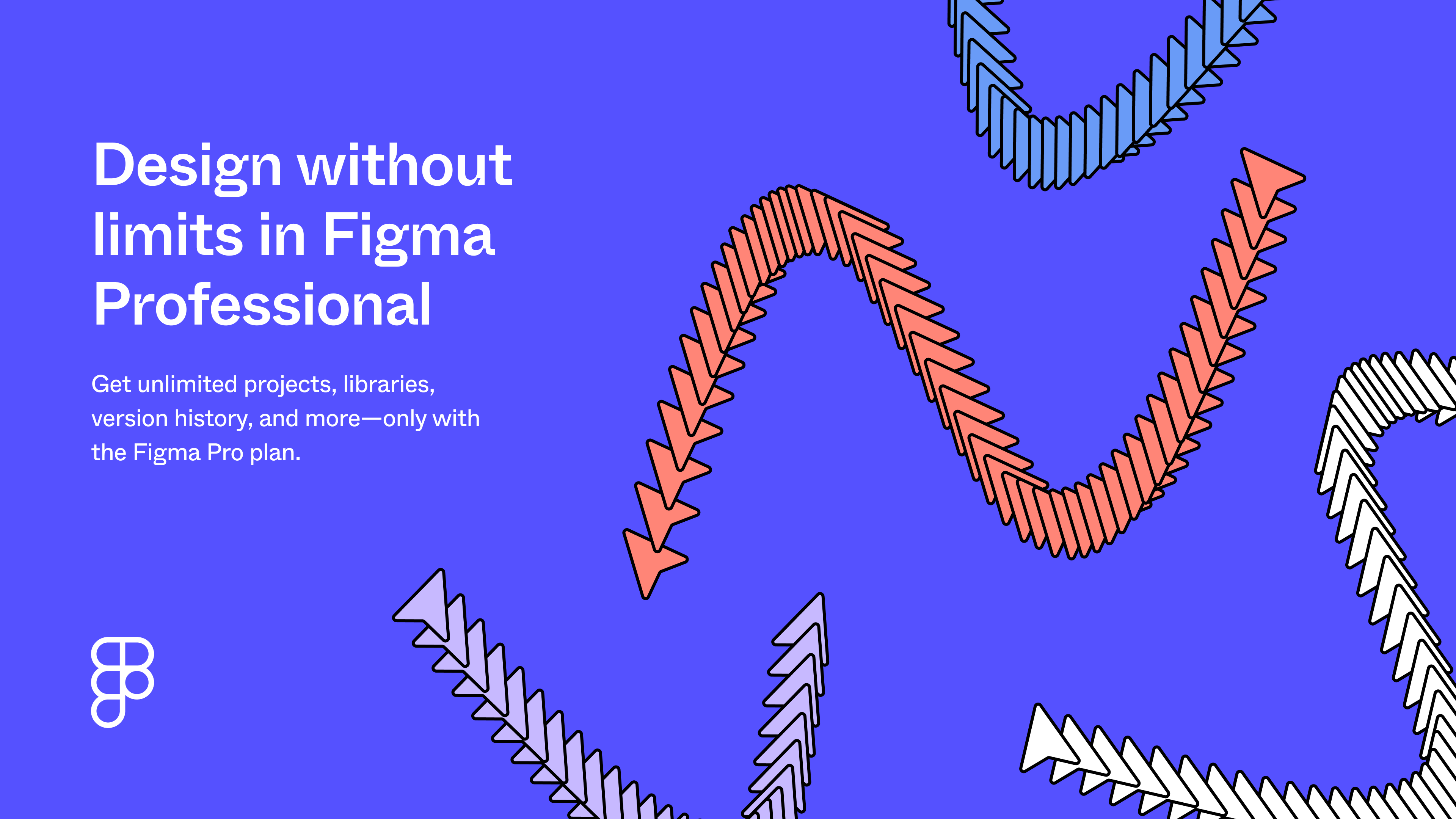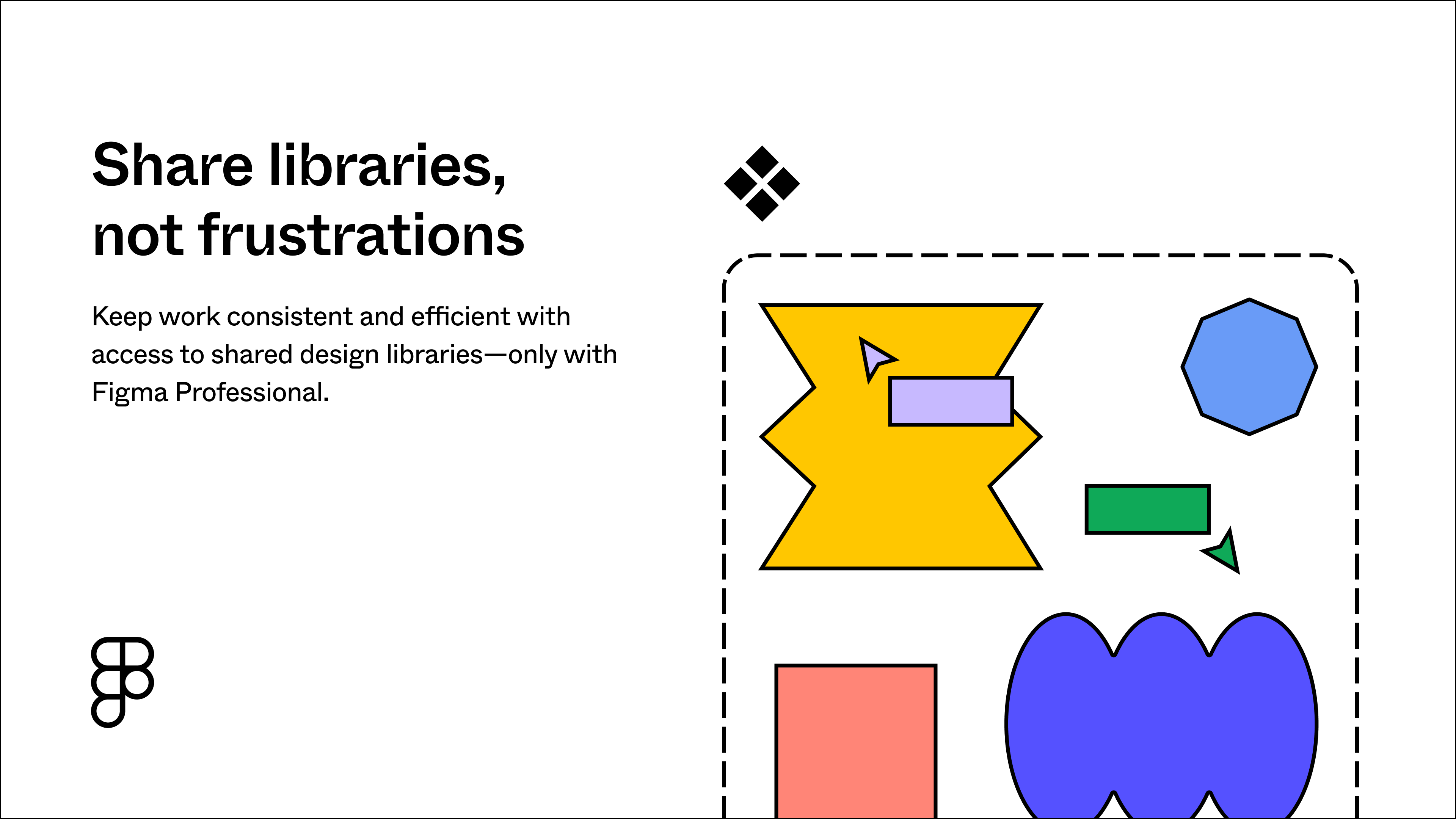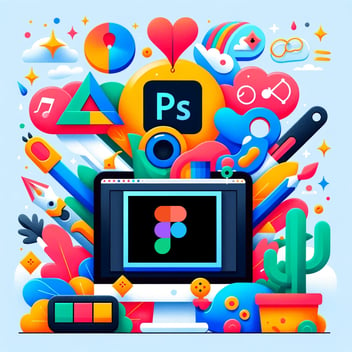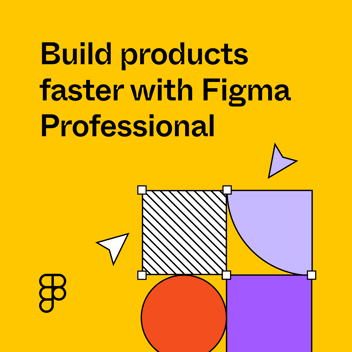
Figma vs Adobe Photoshop: The Ultimate Showdown for Modern Web Designers
This post may contain affiliate links, which means I may receive a commission if you click a link and purchase something that I have recommended. Thank you!
Welcome back to Zealous Sites, your go-to resource for web design insights. I'm Marcus Zeal, and today we're diving deep into a hot topic that's been on every designer's mind: the face-off between Figma and Adobe Photoshop. Whether you're crafting the next eye-catching web design or prototyping a user interface that stands out, choosing the right tool is pivotal. So, buckle up as we pit these titans against each other, helping you decide which reigns supreme for your design journey.
What Is Figma and How Does It Revolutionize Web Design?
In the bustling digital space, Figma emerged as a beacon of innovation. But what exactly is Figma? It's a cloud-based design tool that has been changing the game for interface design with its real-time collaboration features and browser-based accessibility. With Figma, you're not just using a tool; you're joining a movement that redefines how we design in a connected world.
The Rise of a Challenger: Figma's Standout Features
Figma took the design community by storm, thanks to its intuitive interface and focus on collaboration. Designers can join forces on the same project from anywhere in the world, making real-time edits that everyone can see instantaneously. This isn't just about keeping up with the times; it's about setting the pace for the future of design. Figma's vector-based approach and prototyping capabilities also mean that you can go from concept to clickable prototype without ever leaving the browser window.
Streamlining Workflow with Seamless Integration
One of Figma's superpowers lies in its ability to integrate with other tools and services effortlessly. Whether it's pulling assets from a design system or pushing a prototype to a usability testing tool, Figma acts as the central hub for your design workflow. And let's not overlook its free version, which democratically opens the doors to aspiring designers and small teams looking to make a mark without the upfront investment.

Adobe Photoshop: The Time-Tested Champion in Image Editing
When we talk about image editing, Adobe Photoshop is a name that resonates with legacy and power. It’s a software that has been an industry standard for decades, allowing designers and photographers to push the boundaries of creativity.
Unmatched Editing Capabilities with Photoshop
Photoshop’s robust toolkit is unparalleled when it comes to detailed image manipulation. With its intricate layers system, advanced brushes, and sophisticated compositing capabilities, Photoshop enables professionals to create complex visuals that are limited only by imagination. And with Adobe’s commitment to innovation, Photoshop continues to evolve, integrating cutting-edge features that cater to the needs of today's creative professionals.
Photoshop in the Adobe Ecosystem
As a part of the Adobe Creative Cloud suite, Photoshop comes with the advantage of seamless integration with other Adobe applications. This connectivity is crucial for a design workflow that often includes video editing in Premiere or illustrations in Illustrator. For those invested in a multi-faceted creative process, Photoshop’s interoperability within the Creative Cloud offers a compelling argument for its place in the digital artist’s toolkit.
The Core Differences Between Figma and Photoshop: A Side-by-Side Comparison
Navigating the choice between Figma and Photoshop can seem daunting, but understanding their core differences can streamline your decision. Let's dissect the distinctive features and use cases of each tool to see how they stand on common ground and where they diverge.
Collaboration vs. Complexity: A Functional Divergence
Figma shines as a collaborative prototyping tool, enabling multiple designers to work on the same file in real time. Its cloud-based nature means accessibility from any device with a web browser, fostering a dynamic and flexible design environment. On the other hand, Photoshop specializes in complex image manipulation. It offers an unmatched depth of editing tools perfect for intricate graphic work that requires a high level of detail and control.
User Experience and Accessibility: Figma's Browser Agility vs. Photoshop's Robust Desktop Application
Figma's user interface is designed with simplicity and intuitiveness in mind, streamlining the design process with a minimal learning curve. Being browser-based, it’s readily accessible without the need for powerful hardware.
Photoshop’s desktop application, conversely, is a powerhouse of functionality that has been refined over years, catering to professionals who need advanced tools at their fingertips.
Use Cases: Prototyping in Figma, Artistic Creations in Photoshop
The distinction in use cases is clear: Figma is the go-to for UX/UI design and prototyping, offering interactive elements and a quick way to share mockups with clients or team members.
Photoshop excels in photo editing, graphic design, and digital art, where its extensive features like layer masks, blending modes, and content-aware tools can be fully leveraged to produce visually stunning outcomes.
Is Figma Easier to Use Than Photoshop for UI/UX Design?
When it comes to UI/UX design, ease of use becomes a critical factor. Figma, with its user-friendly interface, is designed specifically for ease and efficiency in the UI/UX space. It streamlines the process of designing interfaces with a gentle learning curve, making it a favorite among designers who prioritize rapid prototyping and iterative design.
Comparing Usability and Learning Curve
Figma's interface is straightforward, with less clutter and more focus on design rather than on image manipulation tools. Its drag-and-drop functionality and preset layouts cater to quick adaptations and swift prototyping. In contrast, Photoshop's vast array of features, while powerful, can be overwhelming for new users, particularly those focused solely on UI/UX design.
Interface Design Capabilities: A Close Look
Interface design in Figma is fluid and fast. Its vector-based approach means scaling and resizing elements without loss of quality, and the built-in grids and guidelines facilitate precise alignment. Photoshop, traditionally used for image editing, requires a deeper understanding of its tools to craft interfaces effectively.
Prototyping in Figma vs. Image Manipulation in Photoshop
The battle between Figma and Photoshop intensifies when comparing their prototyping and image manipulation capabilities.
The Prototyping Edge with Figma
Figma's prototyping tools are robust and integrated directly into the design process, allowing for the creation of interactive prototypes that can be tested and shared instantly. This seamless transition from design to prototype empowers designers to validate ideas quickly and iterate on the fly.
Mastering Image Manipulation in Photoshop
Photoshop stands unchallenged in its advanced image manipulation capabilities. Its comprehensive toolkit, including layer styles, advanced selection tools, and content-aware fill, provides an unparalleled level of control and precision for photo editing and graphic creation.
The Power of Plugins: Figma and Photoshop Explored
In the digital design world, plugins extend the capabilities of the core software, and both Figma and Photoshop offer a plethora of these add-ons.
Expanding Horizons with Plugins
Figma's plugin ecosystem is ever-growing, with tools that automate tasks, import assets, and integrate with other apps. These plugins enhance Figma's native abilities, allowing for customizations that can streamline the design process. Photoshop's plugins are just as mighty, offering advanced features ranging from 3D effects to sophisticated image analysis tools that cater to highly specialized editing tasks.
Real-Time Collaboration: Can Photoshop Keep Up with Figma?
Collaboration is the cornerstone of modern design workflows, and Figma has been built from the ground up with this in mind.
Collaborative Design in Figma
Figma's platform enables multiple designers to work on the same project simultaneously, with changes being updated live. This feature is invaluable for teams spread across different locations, ensuring everyone stays on the same page.
Photoshop's Teamwork Capabilities
While Photoshop historically focused on individual work, Adobe has introduced cloud documents and collaborative features to bridge the gap. However, it's still catching up to the real-time collaborative experience that Figma offers so fluidly.
Figma vs. Adobe Photoshop for Illustrators and Graphic Designers

The debate extends into the realm of illustration and graphic design, where the choice of tool can significantly influence the creative process.
Vector Graphics and Illustration: Figma’s Domain
Figma, being vector-based, is naturally suited for creating scalable graphics and illustrations. Its precise vector editing tools allow designers to craft detailed icons and user interface elements with ease.
Graphic Design Prowess of Photoshop
Photoshop’s strength lies in its layering, texturing, and blending capabilities, which are indispensable for graphic designers seeking depth and realism in their artwork.
From Free Versions to Creative Cloud: Pricing and Access
The cost of tools is a critical consideration for designers and businesses alike.
Figma’s Accessibility through its Free Tier
Figma offers a free version that is remarkably feature-rich, providing access to the majority of its design capabilities without a financial commitment.
Photoshop within the Adobe Creative Cloud
Photoshop is available through the Adobe Creative Cloud subscription, offering various plans that cater to different user needs, from individual creatives to large enterprises.
Ease of Use: Which Tool Offers a More Intuitive Design Experience?
Ease of use often dictates a designer's tool preference, affecting productivity and creative expression.
Intuitive Design Experience with Figma
Figma's interface is clean and user-friendly, designed with the intent to lower the barrier to entry for design professionals and enthusiasts alike. It offers a streamlined workflow, enabling quick transitions from wireframes to full-fledged designs.
Workflow Mastery in Photoshop
Photoshop provides a comprehensive suite of tools that, while complex, offer unparalleled control once mastered. Its deep menu systems and extensive toolsets are a boon for those willing to climb the steep learning curve.
The Future of Design: Figma's Browser-Based Innovation vs. Photoshop's Robust Desktop Presence
The evolution of design tools signals a shift in how designers interact with technology and collaborate with each other.
The Advantages of Figma’s Cloud-Based Platform
Figma's cloud-based platform allows for immediate updates, access from any computer, and eliminates concerns about file versions or data loss.
The Strengths of Photoshop’s Desktop Application
Photoshop's desktop application benefits from robust processing power, offline access, and a mature ecosystem of tools and extensions, making it a staple in the industry.
Community and Support: Learning Resources for Figma and Photoshop
The availability of learning resources can greatly enhance a user's proficiency with a design tool.
Rich Learning Ecosystem of Photoshop
Photoshop boasts a vast array of tutorials, forums, and community support spanning decades. Its extensive user base contributes to a wealth of knowledge, from beginner guides to advanced techniques.
Figma's Growing Community and Support
Figma's community, while newer, is vibrant and rapidly expanding. It provides a wealth of resources, including official tutorials, community projects, and forums that encourage knowledge sharing among users.
The Verdict on Learning Materials
Both platforms offer substantial learning materials, but Photoshop’s long-standing history gives it an edge in the sheer volume of resources available. However, Figma's focused and modern approach to design education is quickly making it a valuable resource for contemporary designers.
Conclusion: Figma or Photoshop - Tailoring Your Toolset to Design's Evolving Landscape
In conclusion, the face-off between Figma and Adobe Photoshop isn't a question of which tool is superior, but rather which tool best suits your specific design needs. Figma's real-time collaboration, user-friendly interface, and browser-based agility position it as a modern, accessible tool for UI/UX design and prototyping. Photoshop remains the titan of image manipulation with its advanced features and integration within the Creative Cloud ecosystem, ideal for graphic design and detailed editing work.
The choice becomes clear when you align your project requirements with the strengths of each tool. Figma empowers a collaborative and iterative design process, especially for those embracing remote teamwork and looking for quick prototyping capabilities. Photoshop offers depth and complexity, catering to artists who require granular control over every pixel.
Community support and learning resources are robust for both, ensuring that whichever tool you choose, a supportive network and a plethora of educational material are at your disposal. As you navigate your path in the digital design landscape, let your project's needs, your team's workflow, and your personal design philosophy guide your choice between these two powerhouse tools. Zealous Sites is here to provide the insights and information you need to make that choice confidently and informedly.
TLDR:
- Figma is a cloud-based design tool that excels in real-time collaboration and UI/UX design.
- Adobe Photoshop is the industry standard for intricate image editing and graphic design.
- Figma's intuitive interface and browser-based access offer a lower barrier to entry, particularly for new designers.
- Photoshop's extensive toolkit requires a steeper learning curve but provides advanced features for detailed editing.
- Figma enables seamless integration with other tools and offers a free version, making it accessible for aspiring designers and small teams.
- Photoshop is part of Adobe Creative Cloud, providing powerful integration with other Adobe tools and services.
- Figma's real-time collaboration is ideal for teams, whereas Photoshop is catching up with its cloud documents feature.
- For vector graphics and illustrations, Figma's vector-based platform is well-suited, while Photoshop excels in layering, texturing, and blending for artistic creations.
- Both Figma and Photoshop have rich plugin ecosystems that extend their native capabilities.
- Community support and learning resources are extensive for both tools, with Photoshop having a historical edge and Figma rapidly growing its educational offerings.
- The choice between Figma and Photoshop should be based on project needs, team workflow, and personal design philosophy.
FAQs
Can I use Figma for web design?
Yes, Figma is widely used for web design thanks to its collaborative features, vector-based interface, and real-time prototyping capabilities. If you're not using it yet, definitely go check it out! And use this link to help me out.
What are the advantages of Figma over Photoshop for web design?
Figma's advantages include real-time collaboration, a user-friendly interface for UI/UX design, seamless integration with other tools, and being browser-based which allows for accessibility across devices.
Do people still use Photoshop for web design?
While some designers still use Photoshop for web design due to its powerful image manipulation features, it's less common for full web design projects compared to tools like Figma that are specifically tailored for UI/UX.
Can you design a website using Photoshop?
Yes, you can design a website using Photoshop, especially for creating high-fidelity mockups and graphics that require detailed manipulation.
Do web designers need to know Photoshop?
No, web designers do not necessarily need to know Photoshop, as there are many tools like Figma that are specifically designed for web design and are more aligned with current web design workflows. That said, knowing photoshop has helped me take my web development and design to a whole new level.



